Affiliate links on Android Authority may earn us a commission. Learn more.
Samsung reveals Exynos 5 Dual (5250): what you need to know about the world's first Cortex A15 SoC
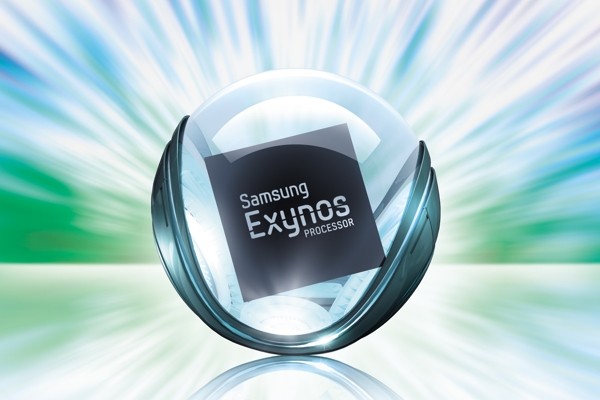
Samsung has just released the whitepaper for their long-awaited Exynos 5250 SoC, now called the Exynos 5 Dual, and there’s a lot of interesting information to be discovered in it.
The Exynos 5 Dual will be the world’s first Cortex A15-based chip, when it will ship later this year, presumably inside the 11.8-inch tablet Samsung is going to launch later this year. Samsung had to wait for this A15-based chip to support the very high WQXGA (2560×1600) resolution of the Galaxy Tab 11.6.
Some of the most important features of the newly unveiled Exynos 5250 are:
- Dual-core 1.7 Ghz Cortex A15 CPU
- Mali T604 GPU
- OpenGL ES 3.0
- OpenCL 1.1 full profile
- Support for WXQGA displays
- Wi-Fi display support
- 12.8 GB/s memory bandwidth with 2 port 800 Mhz LPDDR3 RAM support
- 1080p 60 FPS video performance and VP8 codec decoder
- USB 3.0 support
Let us take you through the most important features of the new Exynos 5 Dual.
Cortex A15
Cortex A15 is the next generation of ARM CPUs, arriving to replace the Cortex A9 design at the high-end of the scale. In a way, the Exynos 5250 will compete with Qualcomm’s S4 chip, based on the Krait design, which is a next-gen design as well, although with slightly less performance per clock than Cortex A15. This follows the same pattern of the first Snapdragon chips (S1, S2, S3), based on the Scorpion design, which also had slightly lower performance than Cortex A9.
Qualcomm’s advantage was that, in both cases, then and now, they came first to market with the new designs. But when the Cortex chips came out, they were able to match and exceed the performance of Qualcomm’s custom design chips.
It seems that history will repeat itself with the dual-core 1.7 Ghz Exynos 5 Dual arriving on the market and competing with Qualcomm’s dual core 1.7 Ghz S4 chips. Qualcomm will also have a quad-core 1.5 Ghz S4 Pro chip later this year, but it will be the same story as with the dual-core S4 vs the quad-core Tegra 3 chip comparison from earlier. I expect the Exynos 5 Dual to beat the quad core S4 Pro in performance for all single threaded apps, with the S4 Pro gaining a slight advantage in multi-threaded apps.
Mali T604 GPU
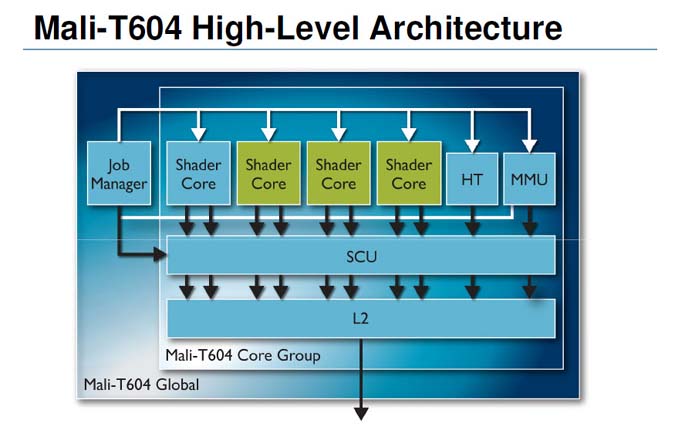
What’s nice about Exynos 5 Dual is that it doesn’t come just with a next-gen CPU, but also a next-gen GPU. This is a fortunate match, as they are both designed by ARM itself, so they benefit from higher integration, and also because ARM changes its GPU architecture only once every 5 years. So Mali T604 is the very first GPU design based on the new Midgard architecture, with unified shaders, OpenGL ES 3.0 and OpenCL 1.1 full profile.
We’ve already discussed that the OpenGL ES 3.0 specification is meant to help developers create more visually impressive games on mobile devices, that should even surpass current-gen consoles soon. OpenCL, or the Open Compute Language, is meant to give developers a way to harness the power of the GPU to enhance what the CPU can do, while making the whole assembly more power efficient. It can be used for games, digital photography, and other things that can be done faster with parallel computing (usually graphics related).
WXQGA Displays and 12.8 GB/s Memory Bandwidth
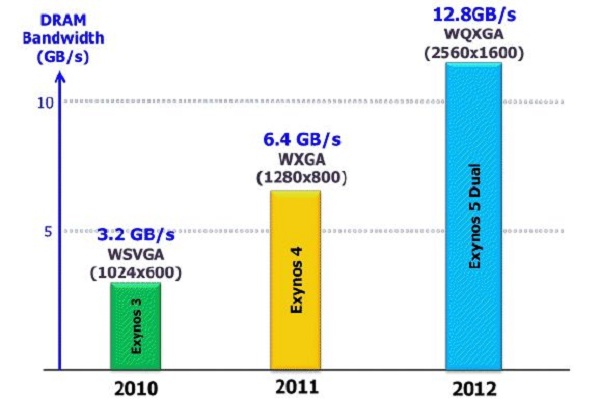
To power a display with a 2560×1600 resolution, which is double (or four times the pixels) of what you see in Android tablets today (1280×800), you need not only a powerful GPU, but also high-memory bandwidth, so you can send all that high resolution data to the screen. Fortunately, the Exynos 5 Dual comes with support for 12.8 GB/s memory bandwidth, with two port 800 Mhz LPDDR3 RAM.
It takes a 1GB/s bandwidth to draw a 24-bit WQXGA screen at 60 FPS, but that’s just for the screen alone. Add the interface and all the icons, and the required bandwidth grows to 8GB/s. But that’s just the effective bandwidth, and when taking into account a memory utilization of 80%, you reach 10GB/s. Exynos 5 Dual has been designed with support for 12.8 GB/s memory bandwidth, specifically to support a 2560×1600 resolution.
Such high resolution displays also use a lot more power than lower-res displays. Manufacturers mitigate the increased power consumption with more efficient and more powerful GPUs, larger batteries, and more efficient displays. The Exynos 5 Dual supports a so-called PSR mode, which enables the display to use 20x less power when displaying a static image, like when reading an ebook or a web page, or viewing a picture. PSR mode should help significantly reduce the overall power consumption of the device.
1080p 60 FPS Video, Wifi Display and VP8 Decoding
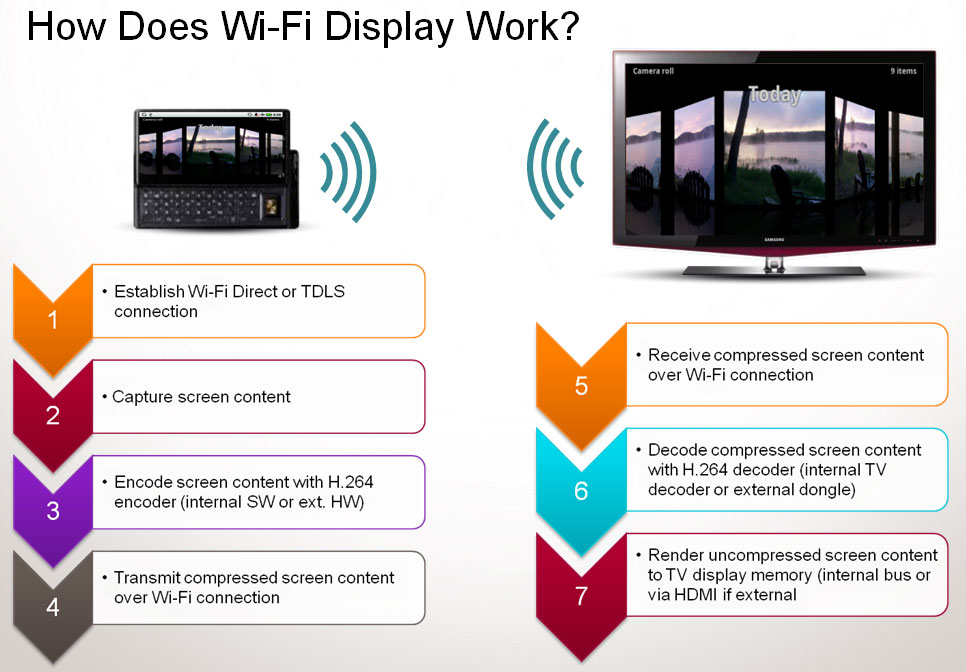
The 1080p 60 FPS video might not be very useful, unless you want to record super smooth videos, but it’s great for displaying stereoscopic 3D graphics. Exynos 5 Dual is the first chip in the market to support full HD 60 FPS video decoding/encoding, and, if you have some 3D glasses laying around, you can use HDMI to stream the video from your phone to the TV, and watch the videos in 3D.
Exynos 5 Dual also supports Wi-Fi Display technology, which means you can stream the videos and everything else inside your phone, wirelessly to your TV. Wifi Display requires a lot of memory bandwidth, as it has to decode and encode the full HD videos at the same time. But Exynos 5 Dual is able to do that, all while providing a minimum of 30 FPS experience.
Google’s VP8 codec is also supported by Exynos 5 Dual, and I think we’re going to see a lot more upcoming chips supporting hardware acceleration for VP8. One of the main arguments of the H.264 video codec over VP8 was that H.264 was already hardware accelerated by many devices on the market, while VP8 wasn’t. I think Google is trying to change that, and finally bring us widely used royalty-free and open source video codecs. Exynos 5 Dual is the first step in that direction, being able to decode full HD video at 60 FPS using the VP8 codec.
USB 3.0 Support
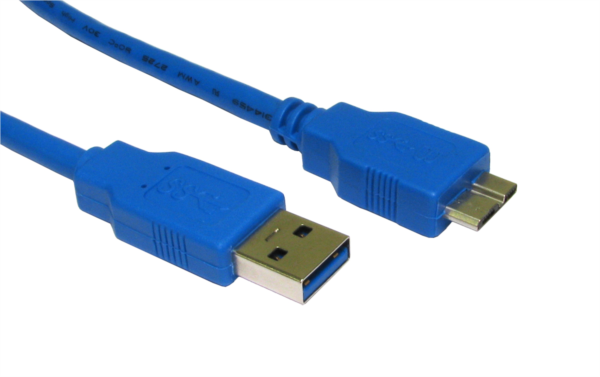
It looks like Exynos 5 Dual is bringing us another first in the mobile world — USB 3.0 support, a standard that can reach 5Gbps transfers, ten times faster than USB 2.0. With all the new laptops coming out these days supporting USB 3.0 and SATA 3 drives, mobile devices were beginning to become the bottleneck when it came to transferring files from and to the PC. USB 3.0 support will help you transfer files in seconds rather than minutes.
Exynos 5 Dual’s USB 3.0 port can operate as either Host or Device, so besides being able to transfer files to your PC, users will also be able to connect peripherals to the device, like keyboards, controllers, external storage, LTE modems. The support for USB host will give Exynos 5 Dual devices a high amount of flexibility.
Conclusion
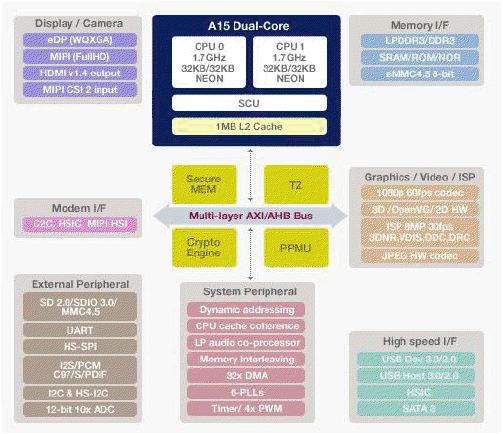
The Exynos 5 Dual is the chip you should look for in upcoming tablets and smartphones, as it should have the most powerful CPU and GPU of any new chips coming out by the end of the year, including the S4 Pro and OMAP 5. Next year, we can begin talking about the quad-core Tegra 4 and the Exynos 5 Quad, but, until then, Exynos 5 Dual should reign supreme in the mobile market in terms of performance and features.